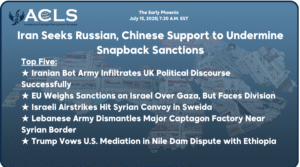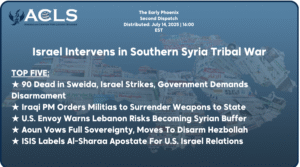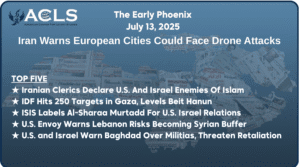The Mossad ِAgent Who Never Was – Inside Iran’s Regime
Editor: Rania Kisar
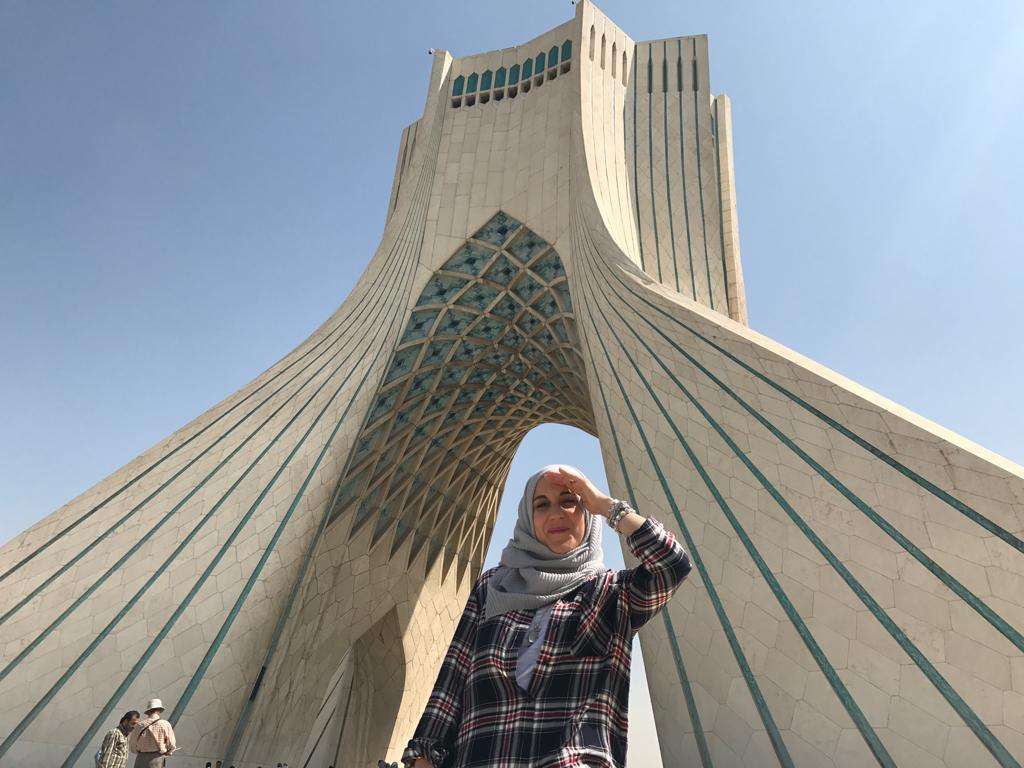
This is the story of a Jewish woman who hid her faith and was able to inflitrate the Iranian regime like no Mossad agent dreams. Catherine of course was never a Mossad agent rather a young woman whose life took her to Yemen and then on to become one of Iran’s advocates and famous Televison anchor. While interviewing Khameini, he told her that his vision is to kill all the Jews back to the sons of Jacob and that if others dies along way, it would be ok as those will go to heaven. Her story is both distressing and inspirational. Her story should be a movie but first here are her words.
Ms. Perez’s, the Mossad agent who never was, reveals her story here at ACLS.
With fiery conviction, Ayatollah Ali Khamenei said to me, “When we say Death to America we refer to a system sold to the Zionist cause, when we say Death to Israel we refer to the sons and daughters of Jacob who raised their hands in apostasy against our great prophets and followed the path of Satan as they toiled to steal Muslim lands and enslave our communities. Their bloodline is perverse, marked for destruction by G-d. We must obey the divine law.” His words dripped with disdain and hatred …
The man’s determination was palpable, the implication of his words terrible. In a few words Khamenei had encapsulated the nature of the regime.
Turning away was no longer an option!
Fortuitous Timing
Few have ventured into the inner sanctum of Iran and reaped the benefits of an up-close observation of the regime’s machinations. The Islamic Republic, operating within a highly compartmentalized structure, functions on a strict need-to-know basis, selectively divulging information that serves its objectives. No confidence is squandered; every move is meticulously calculated and premeditated. This framework ensures that any accidental breach remains confined. Such pyramidal design also permits the regime’s elite to guarantee ideological continuity, in the sense that not all its loyalists are necessarily required to believe in the revolutionary project to the extent they do, thus insulating the Leadership. For a regime like Iran, where secrecy and paranoia reign supreme, admitting outsiders into the fold is not a casual affair, unless driven by sheer necessity.
The Iranian regime’s imperious craving for validation, its yearning to court fresh voices and expand its ideological influence, particularly in Yemen, would prove to be its Achilles’ heel. As the regime worked to develop a new asset to its ideology, few could have anticipated that it was I who in fact sought to learn of their agenda and learn of their modus operandi so that it could be defeated.
If my initial contact with the Islamic regime had been by chance, my ascent to the heights of Iran’s revolutionary structure would be by design. Presented with an opportunity to break into the Islamic Republic, I was determined to play the game as long as it would take, for as far as I could go.
The Path to Tehran

I traversed the borders of Iran unaccompanied. No one compelled me, coerced me, or orchestrated a plan by foreign powers to infiltrate the regime and gain access to critical information. By the time 2011 arrived, I had witnessed an ample display of Iran’s pernicious influence in the Middle East, specifically in Yemen, leaving me no choice but to acknowledge Ayatollah Ali Khamenei as the mastermind behind the shadow of terror. Penetrating the regime is not a venture to be undertaken lightly; it requires assuming substantial risks. One must be invited in – any other approach would raise suspicion and lead to devastating consequences. The regime must make the approach, not the other way around.
Thus, when the opportunity presented itself, I elected to follow suit — fully aware that my endeavor held no guarantees of fruition. Nevertheless, I remained willing to undertake the endeavor.
This journey into Iran’s corridors of power commenced in Yemen in 2002, three years after my marriage to a Sunni Muslim Yemeni man. Amidst the heartland of Arabia, I found myself face-to-face with the Axis of Resistance — an alliance that, surprisingly, witnessed the transformation of a nation seemingly impervious to Tehran’s influence. In just over a decade, Yemen shed its identity and donned the colors not of Shia Islam but of the Islamic Republic of Iran.
While the Iranian regime purports to adhere to the principles of Twelver Shia Islam, its clerical class has adeptly rebranded and, more pertinently, exploited it, weaponizing faith and subjugating its practitioners to their whims. Iran’s unique brand of Shia Islam exhibits the traits of a cult revolving around martyrdom, jihad, and territorial expansion.
Ayatollah Ruhollah Khomeini boldly declared, “Islam says: Whatever good exists thanks to the sword and in the shadow of the sword! People cannot be made obedient except with the sword! The sword is the key to Paradise, which can be opened only for the Holy Warriors! Hundreds of other [Qur’anic] psalms and Hadiths [sayings of the Prophet] urging Muslims to value war and fight. Does all this mean that Islam is a religion that prevents men from waging war? I spit upon those foolish souls who make such a claim.”
Once a client-state of Saudi Arabia, Yemen underwent a seismic shift, aligning itself with the Islamic Revolutionary Guard Corps (IRGC) and allowing its ideologues to rewrite its history to the extent that the Yemen of today is unrecognizable.
I encountered my now ex-husband, a Sunni Muslim man from Yemen, through mutual acquaintances in the United Kingdom in late 1998 as I went to pursue my studies. We married in early 1999. Coming from a predominantly secular Jewish French background, burdened by a longing for belonging and a yearning to create the familial unit I had always craved, I dove headfirst, oblivious to the warnings that our cultural and religious differences, would eventually render our marriage unsustainable.
My first visit to Yemen in 2002 was for a family gathering. Our return to the UK would be short-lived as upon insistence from his family my husband decided we ought to resettle there, and if not forever, at least for a while. Unable to refuse, I followed.

The two years spent in Yemen proved to be a complex experience. Confronted with an alien world I knew nothing about, I witnessed the deep-seated antipathy harbored by many Yemenis towards Jews and Israel. Plagued by Islamic radicalism, Yemen had already become a breeding ground for violent ideologues, each espousing a vehement hatred for all things Western while positioning Islam as the path to salvation. This impoverished Arabian nation teetered on the precipice amidst conflicting religious and political currents. While few could have foreseen Iran’s success in claiming it as its own — the writing was already on the proverbial wall.
Even then, Iran was acknowledged as a dangerous power, an unwanted influence that needed to be purged from Yemen’s society. Despite initial resistance to the ideological allure of the Islamic Republic, Yemen succumbed, absorbed into Tehran’s Axis of Resistance through the ascendance of the Houthi movement and the reconfiguration of Yemen’s socio-political landscape. Tehran, a master manipulator, had honed its skill over the decades, adeptly exploiting nations’ vulnerabilities to vie for influence.
As the poorest and most unruly country on the Arabian Peninsula, Yemen remains a coveted prize for regional powers, owing to its strategic geography. Not only does Yemen provide access to the World Oil Route, but it also opens gateways to Asia and Africa — a geopolitical dream for the Islamic Republic as its leadership endeavors to incorporate more Arab capitals into its Axis of Resistance, thereby reshaping the region to align with its vision.
Previously under the patronage of Saudi Arabia and Gulf powers, Yemen had remained impervious to the Ayatollahs’ influence until the Arab Spring and the downfall of the late President Ali Abdullah Saleh. The unrest of 2011 shattered the established order, paving the way for the most improbable contenders: the Houthis.
Regarded as outcasts within Yemen’s political and tribal spheres, the Houthis emerged in the 1990s on the fringes of Yemeni society. Shunned, derided, and relegated to the highlands, the Houthis faced insurmountable odds. It was only through Iran’s meticulous planning and the strategic appointment of several of its operatives to guide the group that Abdel Malek Al Houthi was able to march upon Sana’a, Zaidi Islam was absorbed into Khameneiism, and Saudi Arabia found itself compelled to wage war against its neighboring state in a bid to contain the escalating threat to its religious and territorial integrity.
The Puppet Masters
Two men had been put in charge of breaking through Yemen’s defenses: Hassan Al Emad, the man Saudi Arabia refers to as the Khomeini of Yemen, and Nader Talebzadeh, Iran’s chief propagandist and close friend to Alexander Dugin – both men would ensure my rise within Iran regime’s ranks would meet no resistance. They both imagined they could use me as a pawn in their chess game.
As fate would have it, Al Emad was a close family friend of my ex-husband, even though their respective ideology and political views could not have been more polarized. The son of a formerly affluent Yemeni family, my ex-husband had retained many close connections to Yemen’s leading class – something Al Emad was keen to utilize for his benefit.

Back then, Al Emad knew nothing of my origins other than the story my in-laws had told their entourage – that of a French girl who had married their son and agreed to embrace their way of life and, above all, toe the line.
Upon my request, we returned to the UK in early 2005, a few months after my daughter’s birth. I met Al Emad again at a family gathering in 2009, following our second attempt at settling in Yemen.
Following encouragement by Al Emad, who I would soon learn was a well-known IRGC operative in Yemen, I would be slowly taught the ideology of the Islamic Republic, first through history books, later through a crash course in the genesis of the Islamic Revolution and the ideals it claimed to embody – that of liberation and empowerment against tyranny. It is then that I commenced my ascent into Iran’s network of influence.
Such proximity to Al Emad and time would play in my favor. Add to that my curiosity for Shia Islam and a passion for history and geopolitics and I was quickly identified as a potential convert to Tehran’s ideology, someone who could be manipulated and exploited to spread the regime’s words among Yemen’s elite – potentially western media too.
We would leave again for the UK on the back of the Arab Spring and the toppling of President Ali Abdullah Saleh in late 2012.
If Al Emad made Tehran pay attention, offering his religious clout, Nader Talebzadeh’s recommendation would open the gates. A close friend to Ayatollah Khameini, the regime’s most trusted advisor and communication strategist, Nader’s influence was greater than that of the IRGC’s most high-ranking commanders.
What he said went. Whoever he brought would be granted access, as it was assumed his vetting was the only one that mattered. He controlled the Leadership’s propaganda campaign and was its architect.
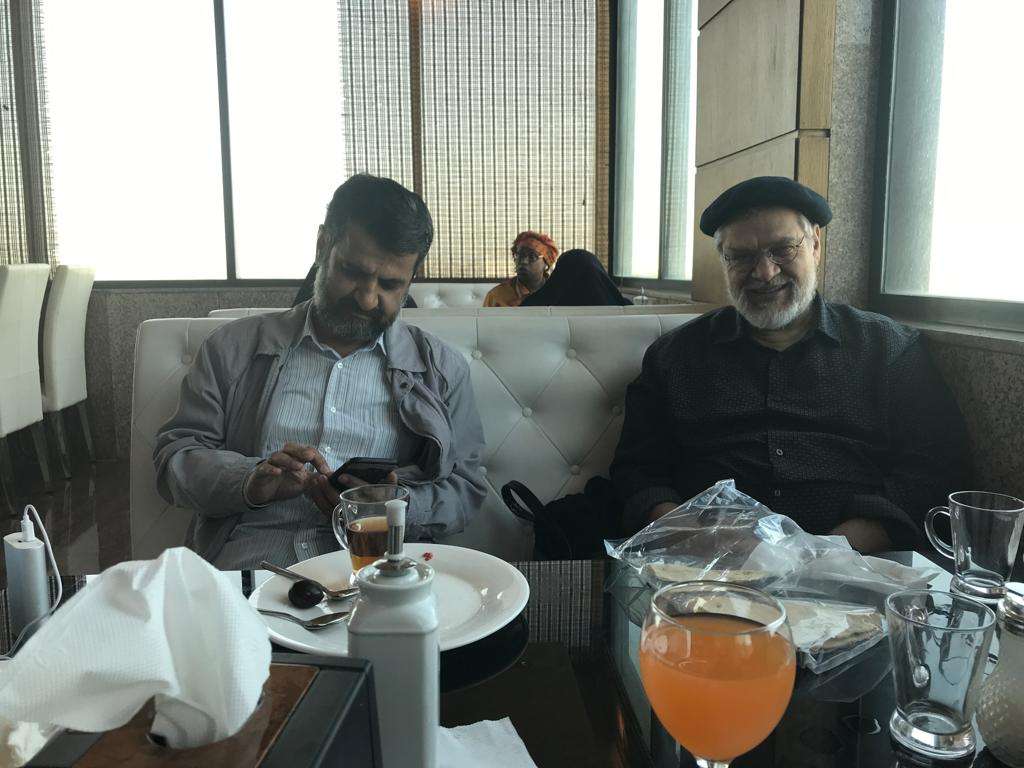
Nader loved to collect people. He would hone talents and build careers, ensuring that loyalties would be secured. I was just another project, a valuable witness of Yemen’s Revolution, a Westerner whose voice would be listened to. My grasp of the region’s dynamics made me a useful tool – that and the fact that I had access to actors within Yemen the regime could not reach. He was to become my mentor.
My ‘education’ would take place over several years – opportunities to demonstrate my utility would be staged and ‘friendships’ arranged so that I could be kept and my thoughts nurtured. Looking back, knowing what I know now of the regime’s modus operandi, I can see how I was being tested and my utility analyzed before I could be let through various circles of influence.
My induction into the regime’s higher echelons came through Lebanon when Marwa Osman, a self-proclaimed Hezbollah supporter, invited me as a political commentator on Etejah TV in early 2015. Within a few years, I became Iran’s favorite Yemeni expert, featured as I was in interviews for Mehr News, Press TV, Tehran Times, Fars News, etc. I was also handpicked by RT (Russia Today) to write OpEds and appear on its programs. Nader Talebzadeh had of course a hand in this.
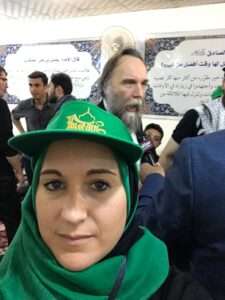
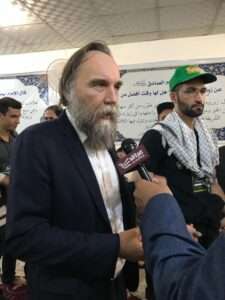
Pictures of Alexander Dugin taken during the Arbaeen pilgrimage in Najaf in 2017, Iraq. Alexander Dugin is President Vladimir Putin’s senior advisor and chief propagandist
A close friend to Alexander Dugin, one of President Vladimir Putin’s close advisors and chief ideologue, Talebzadeh had curated a network of people he could use to promote his ideas and act as a powerful echo chamber over the years. The two men were so close that only a year would go by without them meeting or traveling together.
Iran’s ties with Russia are far deeper and more diverse than many believe, as the two powers run exchange programs, allowing appointed experts to lend their clout across their respective networks so that ideas would be disseminated and certain narratives consolidated. This process also allows Tehran to identify talent and advance careers when and if needed.
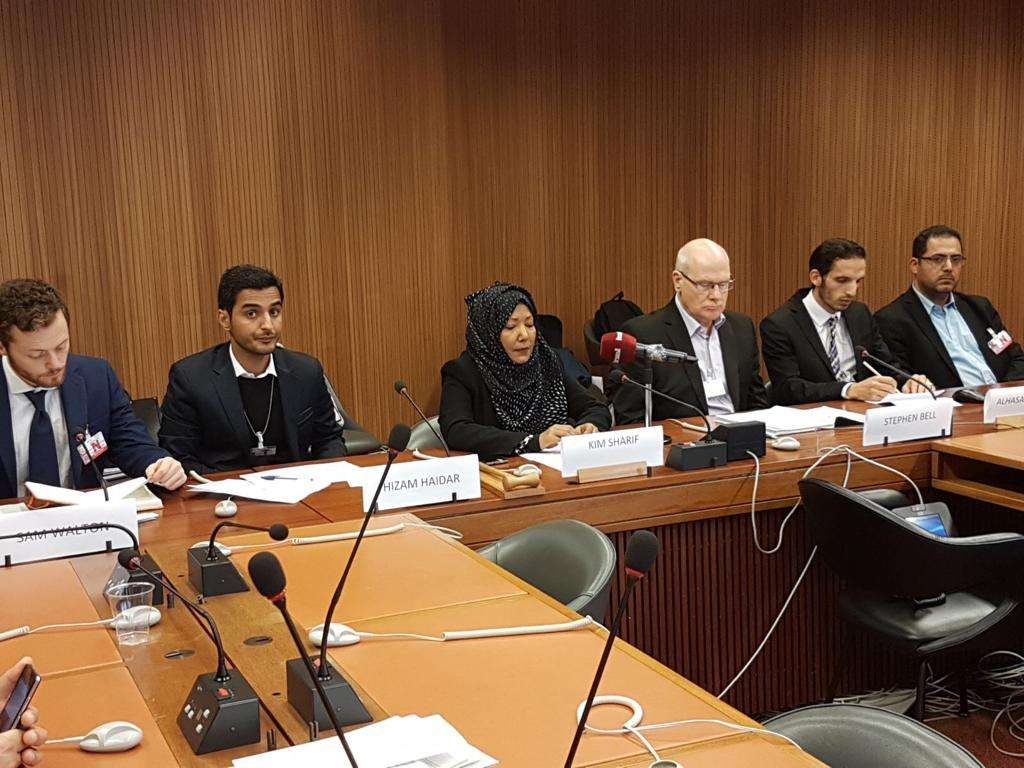
In 2015 I was approached by the Houthis’ information bureau. Kim Sharif, a cousin of Abdel Malek Al Houthi in the UK and an IRGC asset, asked me to attend a series of events she was organizing in the UK with such groups as Code Pink and Stop The War. An affiliate of the Iranian regime, Kim Sharif had developed close ties to many Iran-friendly outposts in the UK, namely the Islamic Centre of England, the Islamic College, the Khoei Foundation, and various Shia media outlets. While the Khoeis are not per se part of the regime, their connection to Grand Ayatollah Sistani in Iraq places them within Tehran’s sphere of influence. Many of the events the foundation hosts for example bring together many of the regime’s loyalists including the clerical class. The Khoeis exist within the Islamic Republic‘s ecosystem – and willingly or not remain instrumental in propagating its ideology.
In a few weeks, she would introduce me to the entire network, positioning me at the heart of Tehran’s network of influence in the UK. I would learn of the many operatives and ‘friends’ the Leadership owned and controlled – it most certainly still does.
As 2016 came rolling in, I became a known face in Iranian media, a favorite on Press TV, and a trusted mouthpiece for the regime. As my profile grew, so did my access within the regime. My position would be sealed one Sunday morning when Khamenei’s office asked me to contribute to the Leadership’s website. Featuring on Khamenei’s official website indicates that one is officially a valued asset above all suspicion. My first task would be to interview George Galloway, the former British MP, himself a favorite among Iran’s loyalists for his hatred of Israel.
A presenter on Al Mayadeen, a TV outlet in line with Hezbollah and the IRGC, Galloway would invite me to several of his shows as a commentator on Yemen first, and finally, Iran.
In early February, Al Emad arranged for me to meet with the leadership of the Dawa party (Iraq), yet another political asset of the regime. This meeting would open the doors to Ayatollah Sistani’s camp in Iraq and allow me to witness the weight and extent of Iran’s influence in Iraq.
‘Death to America, Death to Israel’

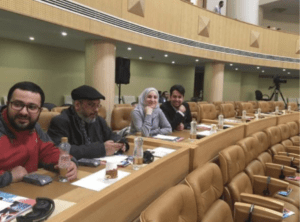
Conference Hall of the Palestine Conference 2017 – Tehran, Islamic Republic of Iran
Later that month, I was brought to Tehran to attend the ‘Palestine Conference.’ There were members of Hezbollah, Hamas, the Houthis, the Dawa Party, Al Wefaq, the PMU, and other groups sold to Khamenei’s ideology. This first journey to the heart of the regime would be a whirlwind. Over four days, I would come to meet the who’s who of the regime: Nader Talebzadeh, Professor Mohammed Marandi, President Hassan Rouhani, Mahmoud Ahmedinejad, Ali Larijani – countless meetings were arranged with countless faces, some of which I recall little of.
It was then that I was granted an audience with Khamenei himself, a day after I had first officially met Nader Talebzadeh, and de facto made my entry into the regime. Little did I know at the time that Nader had watched me from afar, carefully monitoring my work while encouraging the regime’s media to give me ‘airtime’. As with most things in Iran, the decision to take me to Ayatollah Khamenei was taken over a shisha in a cafe not too far from the conference hall. As I sat with whom I believed to be high-ranking members of the IRGC – people’s reactions to the group were enough of a giveaway for me to deduct they were indeed intelligence, and if not that, high enough within the regime’s ranks to wield great influence, I was asked: “if you could request anything what would it be?” As I requested a ring from Khamenei – a token most loyalists value above all, I was told: “What about meeting the Imam in person?”

I was given 15 minutes to get my things together. I was under strict instructions not to take my phone with me or to have any sharp object on me – including the pin many women use to secure their headscarves. I was to done the traditional Iranian Chador – one had been delivered to me earlier that day. As I was ushered in a four-wheel drive a woman went over the rules, impressing on me that there could be no mishaps, no faux-pas made when addressing the Leadership … not that I needed to be told twice.
“Speak only if asked a direct question, do not stare, do not offer your hands to greet anyone, do not smile too overtly, sit still and keep your hands rested on your knees, do not ask impertinent questions, do not offer your opinion unless asked to, do not speak directly at him but rather your interpreter, and whatever you do, do not share any of the details of this meeting on social media or anyone within your entourage.”
We entered a complex with a large courtyard. On the right of us was an annex which I was told was where guests were received. I entered … before me was a room with bare walls, safe from a few pictures of Ayatollah Khomeini and Ayatollah Khamenei – they hung low and crooked. Bright neon lights on the ceiling added to the austerity and dilapidated feeling of the room – not a setting you would imagine meeting with a head of state. On the floor were tattered rugs and cushions running alongside the walls.
A chair was brought in. I was told to sit on the floor and wait. He came through a door located at the very far end of the room with an entourage of men. As I stood up to greet him, which I did by bowing my head as previously instructed, the woman who had accompanied me quickly waved her hand at me, so that I would sit back down. I did.
His voice was soft and he spoke slowly. He seemed smaller and more frail than I remembered him during the conference opening ceremony. Our interaction was an odd one.
He spoke to me of Imam Mahdi and the responsibility he had, as his servant to precipitate his return. He told me of the End Days and the foretold battle that would end with the fall of Christianity and the death of all Jews – how G-d would strike the infidels, humiliating them before the Believers for their acts of heresy. How justice was a matter of submission to the rule, his rule since he alone could translate divine laws. He was after all the Guardian of G-d’s will, the vehicle by which His commands could be enacted and Islam reigns mighty over all.
He spoke at length of the Zionist lobby, his fight to denounce and expose Jews’ nefarious influence, how during his time on the front against Iraq he could feel the perverse presence of Jewish America and realized then that Iran was engaged in a war that would ultimately lead to the Great War referenced in the Quran and the Return of the Awaited Imam.
I was asked if I understood the regime’s most infamous slogan: “Death to Israel, Death to America”. I replied that I wasn’t sure and wouldn’t dare assume.
“When we say Death to America we refer to a system sold to the Zionist cause, when we say Death to Israel we refer to the sons and daughters of Jacob who raised their hands in apostasy against our great prophets and followed the path of Satan as they toiled to steal Muslim lands and enslave our communities. Their bloodline is perverse, marked for destruction by G-d. We must obey the divine law.”
I don’t recall the journey back to the hotel … Khamenei had just rationalized genocide to me.
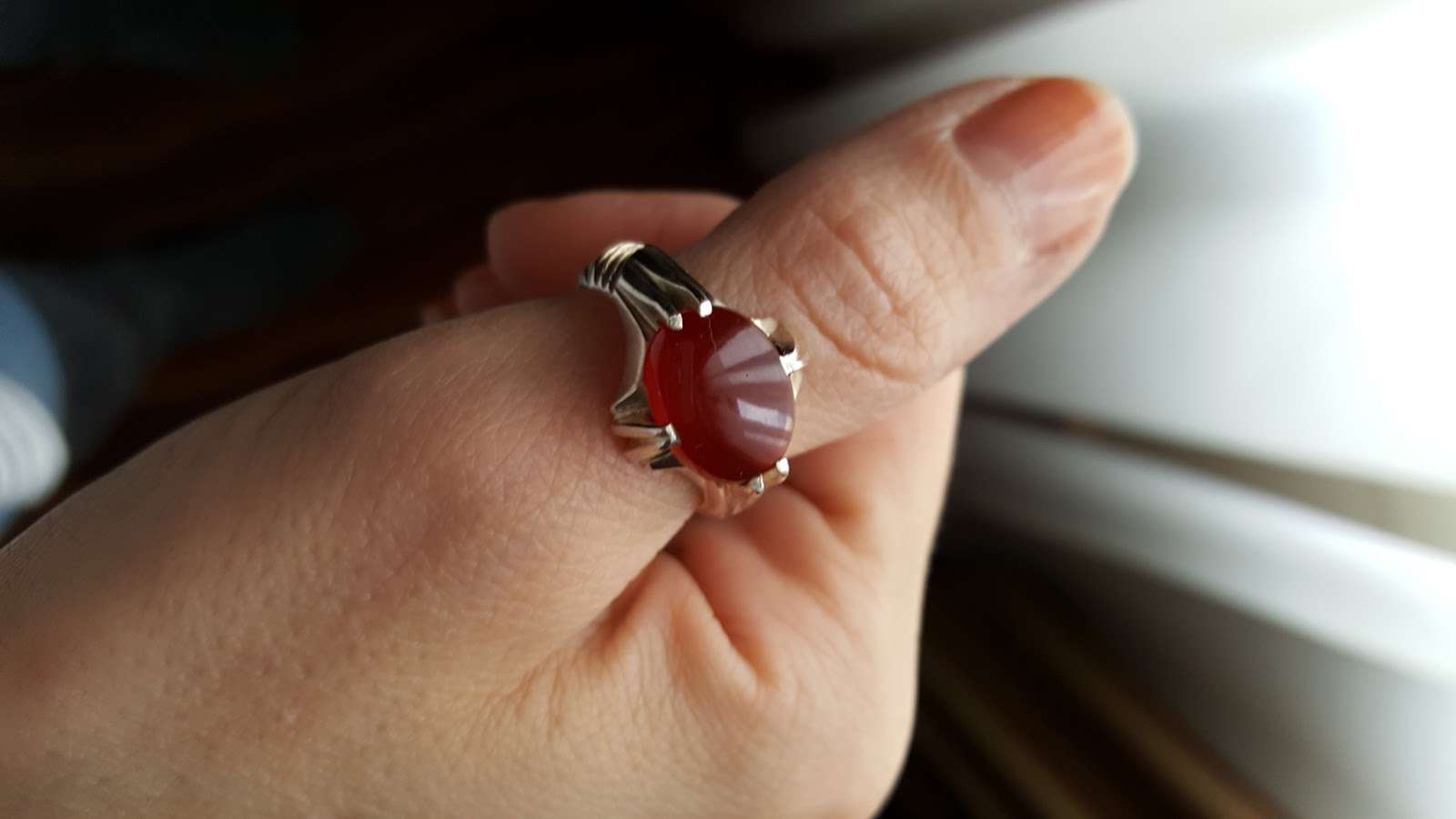
If I had a clear grasp on the regime’s political vision by then, I had yet to be introduced to its methods and, more importantly, the goals it had assigned for the region and, more pertinently, for Western democracies.
In the corridors of Tehran’s conference hall, I would be told of the Islamic Republic’s plan for Israel, its mad pursuit for the ‘destruction’ not of a state but that of its people. How the IRGC had mapped out the Jewish diaspora so that it could, at the appointed time, strike at its very heart and drive a wedge between Israel and its Western allies.
While access was given quickly once in Iran, it reflected over a decade of careful work and networking. I had to prove myself to many of Iran’s clients and make a name first among Iran’s revolutionary networks – Yemen, Bahrain, Lebanon, Syria, Nigeria, and Iraq so that my presence would never be questioned but rather assumed. I posed as a regime supporter to learn of its men’s techniques to buy hearts and minds. I’ve witnessed how many allowed themselves to be seduced by the regime; the pull its ideologues have on intellectuals.
The process by which Iran’s regime buys itself loyalties deserves more scrutiny – the slow burn of its indoctrination, the web its agents will weave around their intended targets. Not all, unfortunately, are aware of the game being played against them. Not all are even aware of whose game they are playing. The regime has many agents and outposts peppered across the MENA region and even our Western democracies, especially our Western democracies No sectors stand immune to the regime’s advances; from the military to academia, politics, and NGOs, Tehran’s agents are everywhere, nurturing contacts and leveraging influence.
Nothing is usually left amiss in Tehran, except maybe in my case. If many voiced reservations about my ascent, never did they suspect my loyalty or imagine that the doors they were opening were to facilitate the entry of a Zionist into their midst. I had erased every shred of my identity and dressed in theirs for far too long.
Nader’s friendship would seal the deal – in a few months, I had become a trusted family friend, someone he would invite on trips and confide in. My links and access to Yemen’s deep state, my ability to read geopolitical developments and relay them within a context the regime could exploit, would prove too valuable not to be utilized. I was groomed to be an IRGC asset.
In April 2017 I was asked to help build the IRGC’s new propaganda campaign in the UK. Nader Talebzadeh asked me to devise a communication/propaganda campaign to help disseminate the ideas and program laid out by Khamenei during the ‘Palestine Conference.’ The regime wanted to mimic Israel’s hasbara efforts in the UK and Europe, bring the media to their views and gain traction among Sunni Muslim communities. They also wanted to draw a list of politicians and state officials they could engage with.
In May 2017, I was again brought back to Tehran, this time to Interview Ebrahim Raisi, then a presidential candidate.

The interview taught me little – other than that Iran’s elections are a complete sham and that the media are an extension of the regime’s propaganda machine. My subsequent conversation with Raisi on the plane ride back to Tehran gave me better insight into the man who would become Iran’s president. A faithful follower of Khomeini’s ideology, Raisi believes in the principles of the Islamic Revolution, just as he believes that he is endowed with a religious duty to bring about the return of Imam Mahdi. Raisi craves power and control. His eyes are set on the Leadership.
In June 2017, I was called to Tehran following a terrorist attack against Khomeini’s shrine. With media attention pointed towards Tehran after the attack, the regime was keen to bring Western voices to relay its message.
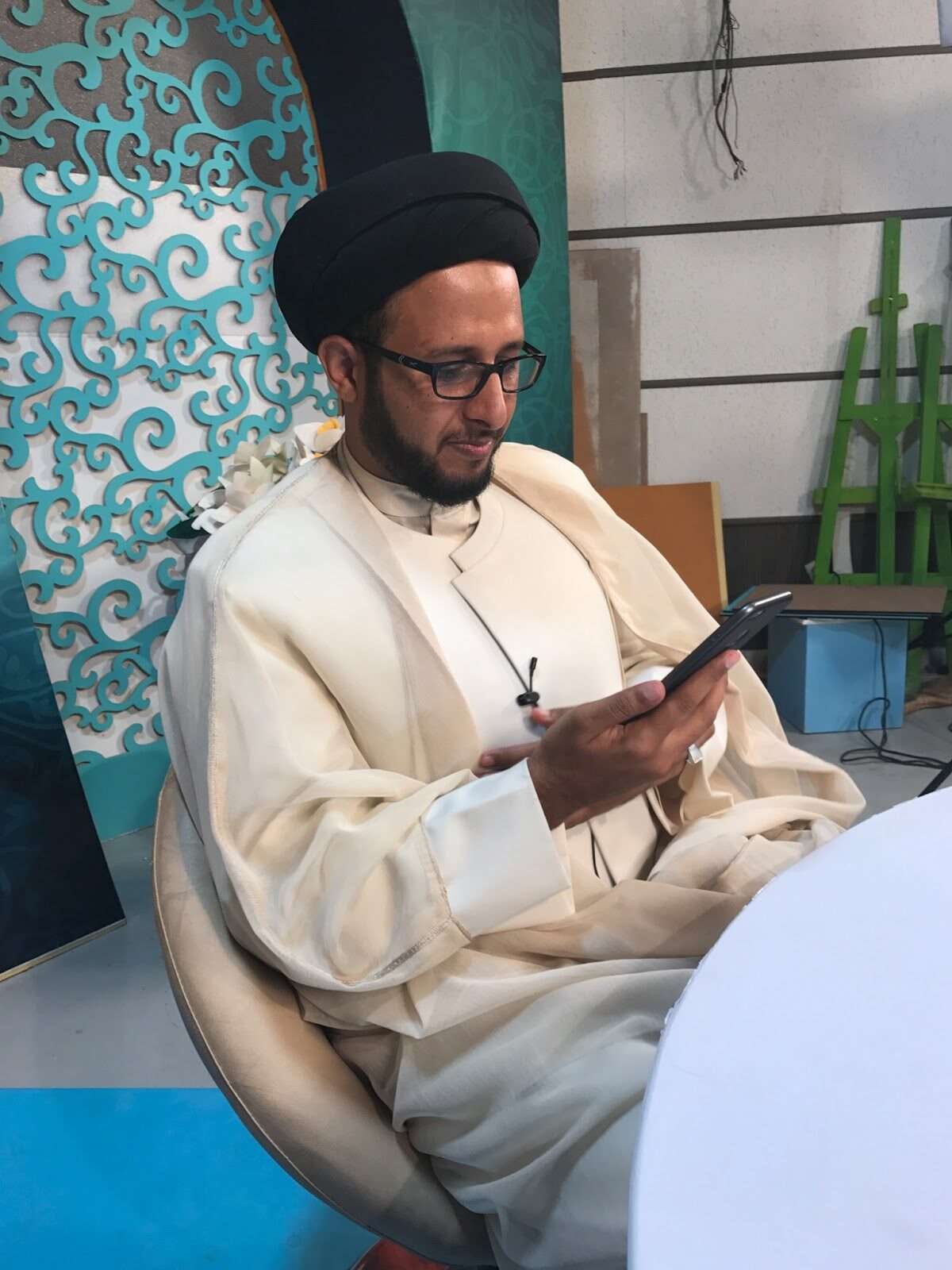
In August 2017, I returned to Tehran to meet with Nader Talebzadeh, Professor Mohammed Marandi, and Hassan Al Emad. Having molded me to be an asset, Nader was keen to maintain close contact. He arranged for me to visit him at his home and meet with several people during my stay, such as Professor Marandi, whom I had also met at the ‘Palestine Conference.’ Following this visit, Professor Marandi would call me weekly to speak about political developments and drill into me the need to pursue Khomeini’s revolutionary goals.
In September 2017, I flew to Tehran again to meet with Nader Talebzadeh. During this visit, I learned that Nader was planning a series of visits to Africa and the Middle East to pursue several business ventures and consolidate his network.

The General
In November 2017, I was invited to attend the Arbaeen Pilgrimage (Najaf and Karbala) as part of a delegation organized by Talebzadeh and Zeinab Mehanna, his wife. They had put together a delegation of academics, media, and activists from across the US, UK, Canada, and the EU so they could better, or so the stories went, understand Shia Islam. What Nader ultimately wanted was to buy goodwill, impress on the delegation the regime’s narrative, and consolidate Tehran’s hold in the West.
During our walk from Najaf to Karbala, Nader pulled me from the delegation so that I could record a special interview for Iranian media and let me know that several people close to the Leadership would meet with me in Karbala. Upon our arrival to Karbala that evening, I learned that Zaynab Soleimani, daughter of the general, and Zaynab Mughniyeh, Imad Mughniyeh’s daughter, were staying in the same hotel. We met for a coffee and a quick chat. Zaynab Soleimani informed me that her father was in town for 24 hours.
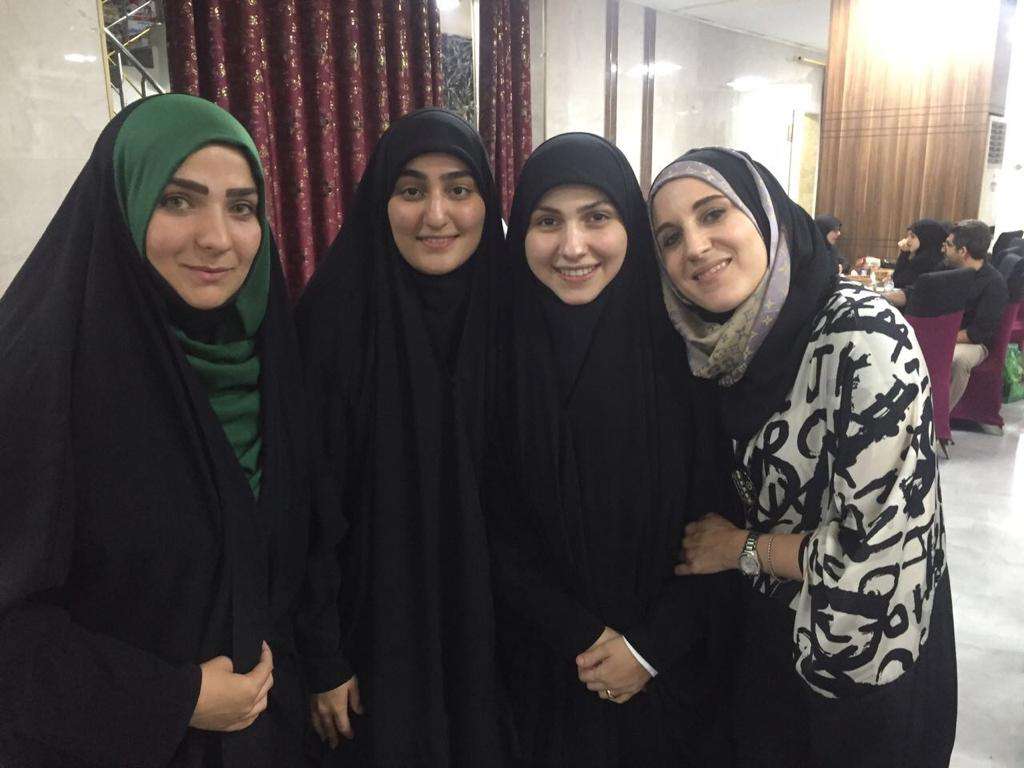
From right to left: Catherine Perez-Shakdam, Zaynab Mughniyeh, and Zaynab Soleimani (General’s Soleimani’s daughter)- Karbala, Iraq 2017
This visit would lead to my meeting with Gen. Qassim Soleimani; the then-head of the PMU, Abu Mahdi al-Mohandes; and several high-ranking members of the clergy, among whom were some close supporters of Ayatollah Sistani.
I came to Najaf upon Nader Talebzadeh’s invitation. Soon after that, Nader asked me to accompany him to a house in Karbala – there, I met with Soleimani. My interaction with the General was brief. He sat on the floor with maps before him, pointing at some troops’ movements, commenting on his efforts to push ISIS out of certain areas in Syria and Iraq. He recalled an incident with ISIS, claiming that his men had contacted the US military, informing them of Al Baghdadi’s exact location, saying the Americans had refused for the Iraqi army to intervene.
As he spoke of his military prowess, glancing often in my direction to gauge I was certain of my reactions, the general asked me if I knew of Ayatollah Khomeini’s famous quote: “If one kills the infidel, and this stops him from perpetrating his misdeeds, his death will be a blessing to him. We shall export our revolution to the whole world. Until the cry ‘There is no god but Allah’ resounds over the whole world, there will be a struggle.”
This meeting was unnerving. Soleimani was the most radical and unhinged of all the regime’s men I’ve met. His advocacy for mass murder and his dismissal of human suffering were most pronounced.

The day that followed would take me to Imam Hussain’s shrine in Karbala, where the delegation met with several high-ranking clerics from Ayatollah Sistani’s office, the Head of the PMU, Abu Mahdi Al Muhandis, and several representatives of Ayatollah Khamenei in Iraq.

In December 2017, Tehran asked me to arrange a meeting with Yahia Saleh, nephew of the late President Ali Abdullah Saleh. The regime was keen to know if the Saleh faction would consider an alliance with the Houthis and abandon their military operations in Yemen. Far from selling the regime to Yahya, I tried to assess to what extent Yahya understood the role Iran continued to play in Yemen.
In early 2018 I would make my last trip to Iran. For the first time, I was challenged by immigration officers and asked to answer a series of questions on why I was visiting Iran – my name had tipped them off. Although I was immediately let go after Nader Talebzadeh intervened, I felt I was cutting it too close for comfort. This time, the regime wanted to speak to me about the MEK and asked me to research the group. The MEK makes the regime the most nervous of all the opposition groups based outside of Iran.
By the end of 2018, I had almost completely disengaged from the regime. It coincided with a request by the Leadership’s office for me to write Khamenei’s biography and convey to a Western audience the essence of Iran’s revolutionary message. By then, I felt too exhausted and sickened by the regime to carry on the charade. I also learned that several IRGC assets in the UK suspected that I was, in fact, a Zionist – an infiltrator. Given the stakes, I disappeared quietly, citing family problems to justify my silence.
From 2019 to 2021, I worked to cut all ties with the regime, choosing not to speak against it, not knowing how they would react. I also needed time to digest what I had learned and determine how to utilize my knowledge best. The pandemic would facilitate my disengagement.
In late 2021 I wrote in the Times of Israel about my meeting with Ebrahim Raisi. Following Raisi’s election to the presidency, I knew that my knowledge had become relevant and that Raisi’s profound hate for Israel would lead to attacks against Israeli interests in the region and potentially the diaspora.
As the regime learned of my ‘betrayal,’ I would be labeled an enemy of the state – with all its implications.
We Got it Wrong!

It is crucial that we recognize the pressing need for a comprehensive reframing of our foreign policy towards Iran. In our pursuit of peace and the promotion of democracy as a catalyst for nations to prosper and flourish, we thoroughly underestimated our enemies’ ambitions – that to subjugate us.
Most troubling of all, we have failed to grasp the true agenda that drives Iran’s regime, the tactics it employs, and the assets it cultivates. We have been so preoccupied with extinguishing the fires ignited by its agents that we have lost sight of the bigger picture.
Our misjudgment has brought the Iranian regime to the brink of victory, and its triumph is not due to the reasons we might assume. The true threat emanating from Iran does not solely lie in its nuclear program or its territorial expansion across the MENA region. Rather, it resides in the legions of men and women who have been drawn into its narrative, trapped as they are in cycles of hatred and victimization.
The regime meticulously studies us, laying traps and patiently waiting for us to fall into them. Iran is a master manipulator, and we find ourselves unwittingly dancing to its tune.
Tehran’s vision projects itself in the future, not the next election cycle. The regime cares little for popular approval or even efficiency, its men are willing to wait us out, absorbing losses as they carefully weave their carpet.
Islamic radicalism knows no sectarian boundaries; it is an Iranian phenomenon. The full extent of Tehran’s influence has yet to be fully understood and mapped out.
The slogan: “Death to Israel, Death to America,” is not a figure of speech meant to exasperate. Those words do not exist in a vacuum devoid of all political thought – they are the expression of a very clear project which remit I’m afraid is again not limited by geography but rather pertains to what Israel and America represent as far as the regime’s theological and political schema is concerned – an act of rebellion.
The Islamic Republic stands today, the biggest threat to secular democracies. For decades, Tehran has been an integral sponsor of terrorrism, opening its coffers and its training camps to whoever wishes war on the West and its apostasy. We are the infidels to whom their clerics urge followers to lay waste. Everything that we are – from our quest to achieve self-governance and sovereignty over our lives, to our human rights advocacy and our calls for equality before the rule of law, or again free speech – are values Tehran’s clergy deems an insult to its religious sensitivities. Ironically, their actions, often promoting bloodshed, seem to have little to do with genuine religious principles. Nevertheless, Iran’s clerical class persists in attempting to rationalize genocide, presenting it as the liberation of oppressed people from enslavement. This contradiction sheds light on their manipulation of religious beliefs to justify their actions and ideologies.
“We do not worship Iran, we worship Allah. For patriotism is another name for paganism. I say let this land [Iran] burn. I say let this land go up in smoke, provided Islam emerges triumphant in the rest of the world.” – Ruhollah Khomeini
We would do well to appreciate the magnitude of such words, for since its inception, the Islamic Republic’s truest expression, its life force and raison d’être, has been to cater to a warped Shia Islamic ideal – the worldly manifestation of the Awaited Mahdi’s Kingdom, which sovereignty extends to all that is and all that will be.
The Iranian regime exists in a state of profound nihilism. Although Iran’s Leadership claims to embody morality, its ideologues have encouraged heinous violations and crimes – so their purposes would be served, advocating even the death of the innocents.
It needs an enemy to define itself against; it thrives on chaos to better exploit socio-political faultlines and in the process wield more influence; it demands a cause to hide behind so it could appear as a champion of the people. Both Khomeini and Khamenei have always positioned themselves against elusive enemies: the West, liberalism, and capitalism – not to offer answers but rather to denounce; hoping in doing so that they would rally around their rule the populace, forever blaming their failures on others.
The Iranian regime’s most remarkable achievement has been its ability to constantly divert our attention away from its vulnerable spots, preventing us from striking where it truly hurts, and leaving us ill-prepared to defend ourselves against its relentless attacks or anticipate its next move.
We are facing a formidable adversary in the Islamic Republic. Its ranks will not easily crumble, and unless we dismantle its alliances and accurately identify its strongholds through meticulous mapping, it will merely emerge under a different guise.
Make no mistake; we are engaged in a battle for our survival, not a clash of civilizations. Losing is not an option, for it would mean surrendering the very essence of our existence—the freedom to think and act independently.
All Roads Lead to Tehran

Without this single entity and the venom its ideologues have injected into the region over the decades, subtly reshaping its socio-religious fabric to align with its own agenda, our history books would portray a vastly different narrative. The urgent need for a complete rebranding of our foreign policy towards Iran cannot be overstated.
For decades, the Islamic Republic of Iran has skillfully exploited the fundamental principles that underpin our democratic societies, such as freedom of speech and assembly, to undermine and pervert our institutions. By strategically generating tensions and exploiting existing divisions, Iran has succeeded in turning us into unwitting actors in our own downfall, slowly eroding our unity and causing us to compromise our core values in the name of self-protection.
Iran has cunningly capitalized on the very freedoms that define our democratic systems. Through the manipulation of free speech, it has propagated its own narratives and ideologies, often using media outlets and propaganda to disseminate its messages. By infiltrating social platforms, it has sown discord, amplifying existing divisions and fostering animosity within our societies.
Similarly, Iran has exploited the freedom of assembly to its advantage. By organizing and supporting various groups, it has created a network of allies who work towards its interests. This allows Iran to influence public opinion, shape discourse, and exploit vulnerabilities within our democratic structures.
By exploiting our differences, it has fueled political polarization, social unrest, and ideological clashes. By fostering a climate of fear, it aims to weaken our societies from within, making us susceptible to divisive rhetoric and policies that undermine the very foundations of our democracies.
The ultimate objective of Iran’s manipulation is to cause us to turn against ourselves and compromise our core values – beyond that the regime wants to exhaust our resolves, systematically forcing us to engage in conflicts and crises that forever drain our resources – Iraq and Afghanistan stand testimony to such tactics.
By instigating internal strife, the regime aims to weaken our unity, erode trust in our institutions, and undermine our belief in the democratic principles that we hold dear. As we become consumed by internal conflicts and divisions, we inadvertently play into Iran’s hands, allowing it to achieve its own strategic objectives at our expense.
To counter Iran’s subversive tactics requires a rethinking of our strategy, but more importantly a mapping out of the regime’s circles of influence, its finances, and methodology. Resolve will be needed … courage also.
In the words of Winston Churchill: “Courage is rightly esteemed the first of human qualities because it has been said, it is the quality which guarantees all others.’ – taking risks for what you believe in often underlies success.”

